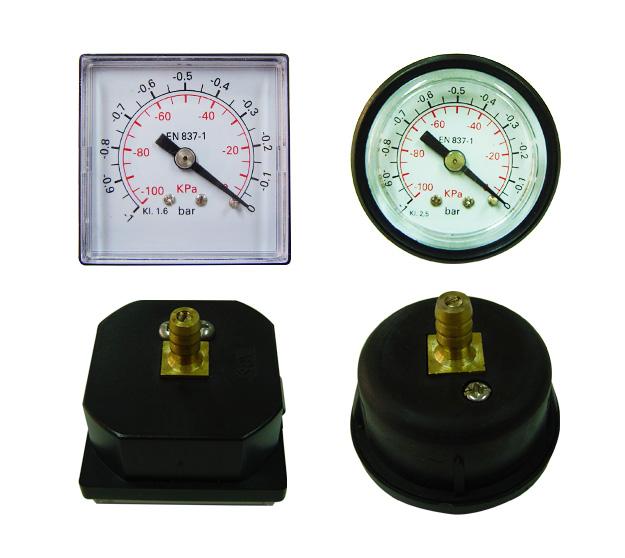When it comes to measuring pressure, various instruments are used, each with its own set of features and benefits. Among the commonly used pressure gauges are panel-mounted pressure gauges, sanitary gauges, and tridicators. In this blog post, we'll take a closer look at each of these types of gauges, their features, and how they differ from one another.
Panel-Mounted Pressure Gauge
As the name suggests, a panel-mounted pressure gauge is a gauge that is mounted on a panel or a surface. It is designed to measure pressure in industrial and commercial applications where the need for monitoring and controlling pressure is critical. A panel-mounted gauge typically features a dial display with a pointer that indicates the pressure reading. The gauge is usually mounted using a flange or bracket that secures it to the panel or surface.
Panel-mounted gauges are available in a variety of sizes and pressure ranges. They can also come with different types of connections, such as NPT, BSP, or flanged. One of the advantages of a panel-mounted gauge is its easy visibility, making it convenient to monitor pressure levels from a distance. Additionally, panel-mounted gauges can be customized with different types of dials, materials, and coatings depending on the application.
Sanitary Gauge
A sanitary gauge is a type of pressure gauge designed for use in hygienic applications. These applications include the food and beverage industry, pharmaceuticals, and biotechnology. Sanitary gauges are made from materials that are compatible with the application, making them resistant to corrosion, contamination, and other types of damage. They are also designed to meet stringent hygiene standards, ensuring that the gauges themselves do not contribute to contamination.
Sanitary gauges typically feature a clamp connection, which allows for easy installation and removal without the use of tools. They also have a smooth surface finish, which makes them easy to clean and prevents bacteria buildup. Sanitary gauges are available in different sizes and pressure ranges, and they can be customized with different types of dials and materials depending on the application.
Tridicator
A tridicator is a gauge that combines three functions: pressure measurement, temperature measurement, and altitude measurement. It is typically used in boilers and other heating systems to monitor pressure, temperature, and altitude levels. A tridicator typically features two dials, one for pressure and one for temperature, and a pointer that indicates altitude.
Tridicators are available in different sizes and pressure ranges. They can also come with different types of connections, such as NPT, BSP, or flanged. One advantage of a tridicator is its ability to monitor multiple parameters in a single instrument, making it a convenient and cost-effective solution. Additionally, tridicators can be customized with different types of dials and materials depending on the application.
In conclusion, panel-mounted pressure gauges, sanitary gauges, and tridicators each have their own unique features and benefits. When selecting a pressure gauge, it is important to consider the specific requirements of the application and choose a gauge that is compatible with the process conditions. With the right pressure gauge, you can ensure accurate pressure measurement and control, which is essential for maintaining process efficiency and safety.


